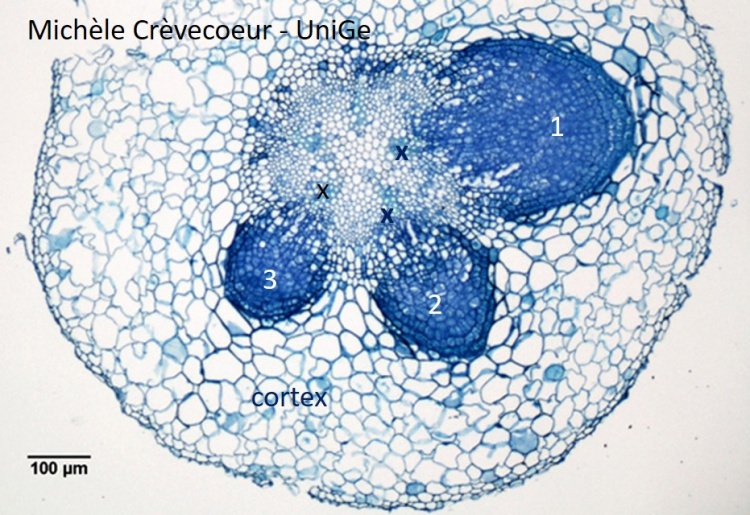Pericycle
Pericycle is a primary tissue constituted of a single layer of cells that is found in young roots. It is the outermost layer of the central cylinder, layer glued against the endodermis, the innermost layer of the cortical parenchyma in the root ( see root of Iris). Cells of the pericycle are usually narrower than those of endodermis and they frequently have thin walls. Cells in front of xylem poles can divide becoming meristematic (they dedifferentiate) to produce lateral roots (also called branch roots) which must grow through the tissues of the endodermis and the cortex to reach the exterior the primary root.
Since the pericycle is located deep within the root the primordia of new lateral roots must break the outer layers of cells to emerge outside. Initiation of lateral roots is therefore endogenous. On the other hand, there is hormonal (auxin) regulation of their emergence.
Lateral roots appear at a distance from the apex variable according to the species (7 – 9 cm) in the organogenesis region located above the differentiation region (root hair region). In a first time their growth is horizontal i.e., perpendicular to the main primary root. Then they curve toward the soil (positive gravitropism) and they organize in different regions as the main root: root cap, quiescent center, meristem. The xylem and phloem of each lateral root are continuous with the vascular tissues of the parent root and have the same structure. Lateral roots participate to extension of root system to increase absorption of minerals and water.
